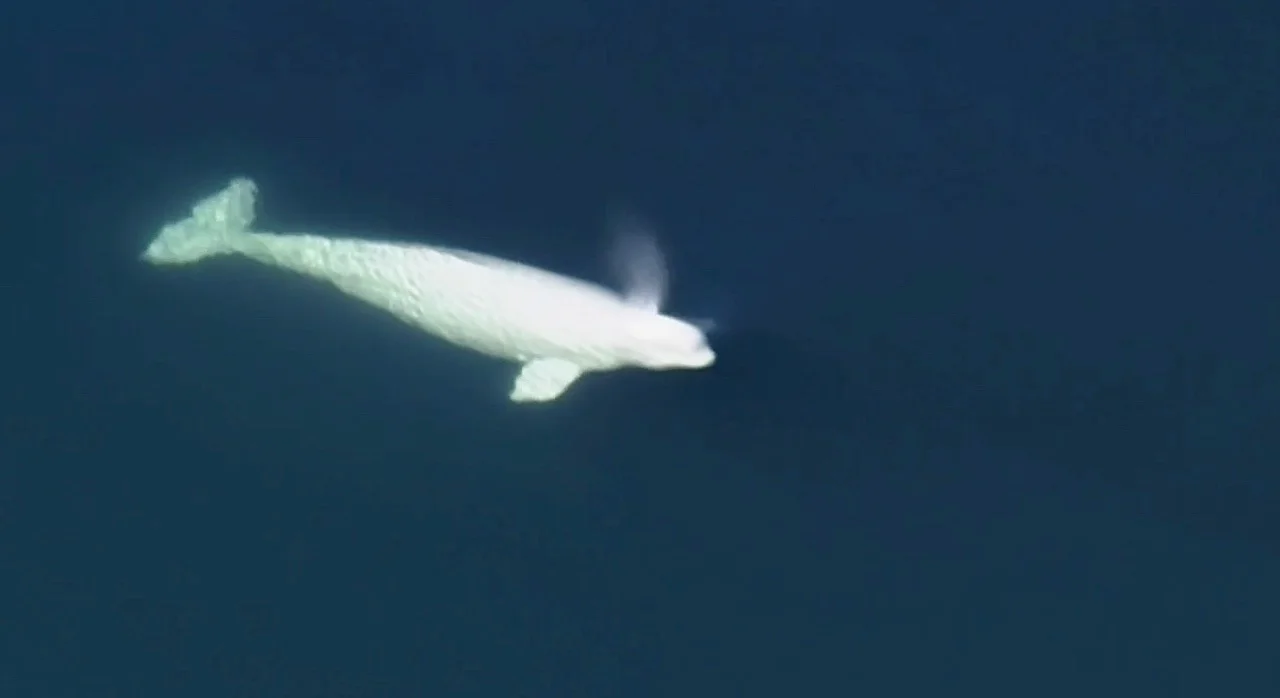
Rare sighting of beluga whale in Pacific Northwest first since 1940
Aside from a few recent appearances in the Pacific, the one other known documented sighting of the beluga whale in the aforementioned ocean, outside of its native range, dates back to April 1940.
The spotting of a beluga whale swimming around Puget Sound in the Pacific Northwest has people baffled in the region because it's the first time since 1940 the mammal has appeared there, according to local media.
Since Oct. 3, people in the greater Seattle area have documented the white whale swimming around Puget Sound. What's peculiar is that the beluga is usually found in Arctic and subarctic waters.
SEE ALSO: Watch thousands of beluga whales embark on their annual migration live
The first observation was in southern Fox Island, followed by sightings in Point Defiance and Commencement Bay, respectively. The fourth glimpse was reported in western Seattle, and in the fifth, the whale was seen in the waters of the Puget Sound Naval Shipyard, Michael Milstein, public affairs officer for the National Oceanic and Atmospheric Administration (NOAA) Fisheries West Coast Region, told The Seattle Times.
Although it's uncommon for a beluga whale (Delphinapterus leucas) to make an appearance in waters in the Pacific, it isn't completely unheard of. In 2020, a beluga was seen off the coast of San Diego, Calif., and one was also found dead in Baja California Sur, Mexico, a short time afterwards, possibly the same individual.

(Sky King/CNN)
Aside from those Pacific appearances, the one other known documented sighting of a beluga whale in the aforementioned ocean, outside of its native range, dates back to a story published on April 24, 1940, in the Tacoma Times. The article recalled an unknown sea mammal with a colour described by locals as greyish or "dirty white."
"The closest beluga population is Cook Inlet, Alaska," which is about 1,500 miles (2,400 kilometres) away from Seattle, Howard Garrett, co-founder of Orca Network, a non-profit organization dedicated to raising awareness of the whales of the Pacific Northwest, told Live Science. "I haven't checked the water temperatures there, but I'm sure they're a bit colder up there than here."
There was a report of a beluga in Puget Sound in 2010, but there was only one witness that wasn't able to capture any visuals of it, he noted.
WHALE'S ORGINS REMAIN A MYSTERY
As unexpected as its appearance was, there isn't any evidence that indicated the beluga's origins or why it was trekking through local waters. "We've seen no markings, no indication of where it comes from," said Garrett.
A beluga is swimming on its own is mysterious. The mammals are considered to be social creatures that live in pods of as many as 100 individuals, Garrett said.
So, why was this particular whale swimming solo?
"Until we have some indication, my default theory is that this whale just decided to go out walking, go explore," said Garrett. "It wanted to travel. It's highly unusual, but every now and then it happens with different [beluga] populations. So, it's not totally unprecedented, but definitely very rare."

(Sky King/CNN)
Despite the puzzling circumstances surrounding its appearance, the sightings of the Puget Sound beluga to date seem to indicate it is in good health.
Garrett said belugas eat squid, small fish and crabs, "and there's plenty of that in Puget Sound." The Salish Sea inlet also houses other whales, including transient and resident orcas, as well as migrating grey, humpback and minke whales, Garret added.
Thumbnail courtesy of Sky King/CNN.
Follow Nathan Howes on Twitter.











